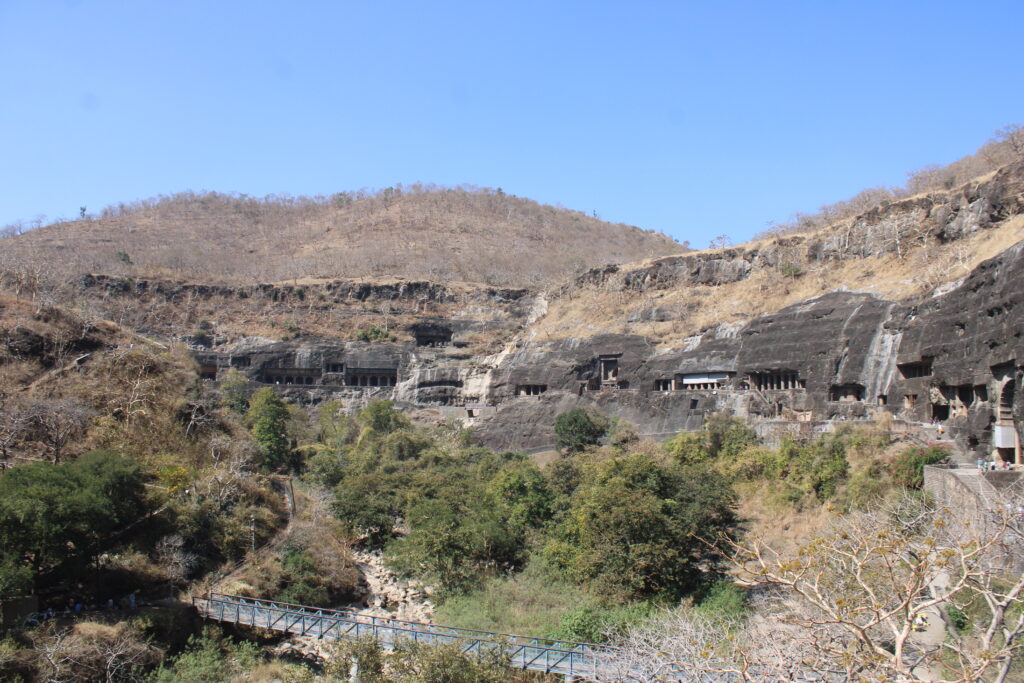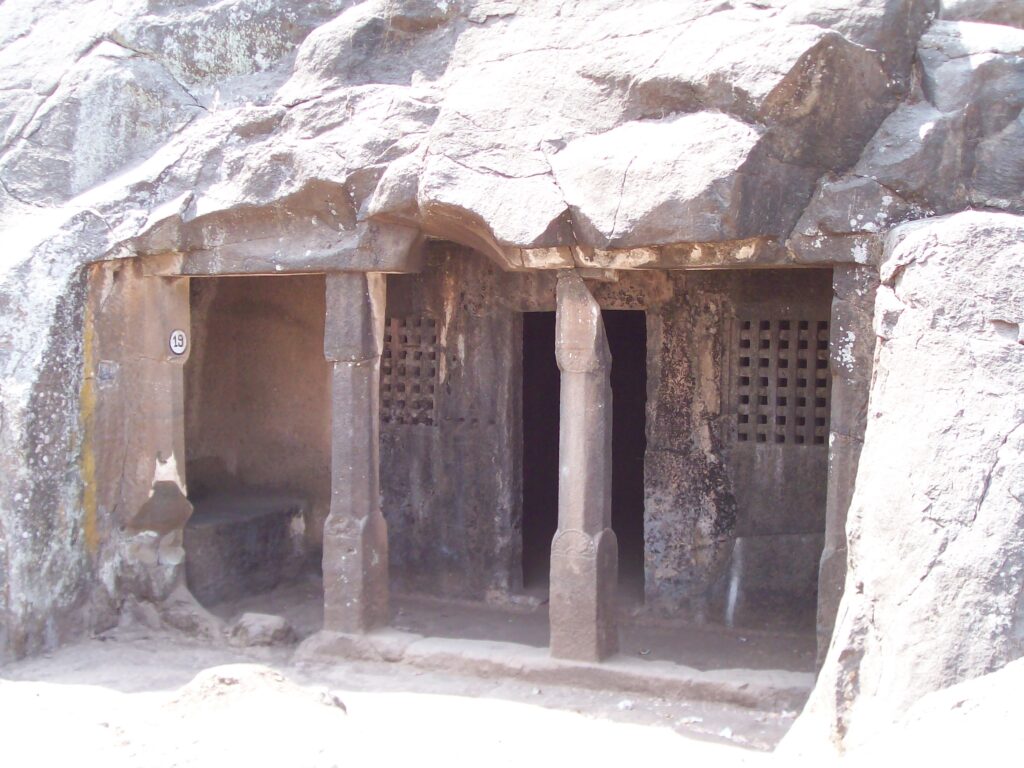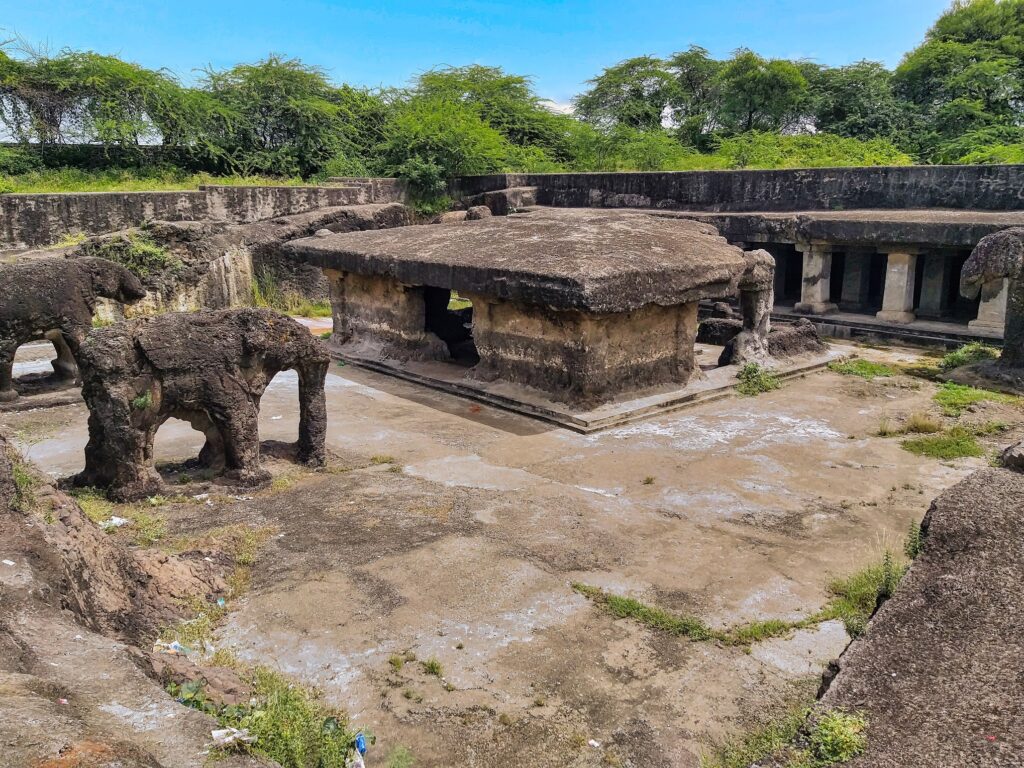
Ajanta Caves
If we see the evolution of temple architecture over the time, our research would go back to almost 24 centuries. The time when Mauryas were ruling in the north and Cholas and Pandyas were ruling the southern India. Before this era, the worship would mostly happen through the rituals of Yagnya and sacrifice. These kind of rituals did not require a permanent structure, and would often take place in temporary huts or shelters built up with an open area for the firepit. The ritual of Yagya continues to this date, and is especially an integral part of the auspicious ceremonies like wedding, housewarming, inauguration of new businesses etc.
The era after 3rd century BCE is when the rituals shifted from Yagya and worship of nature forces, to prayers in a praying hall. The praying required halls to be built up. And the naturally formed, or sometimes artificially made, caves provided a good option for the same. This was the era when rock cut architecture gained popularity in India.
Rock-cut architecture is the creation of structures, buildings, and sculptures by excavating solid rock. Creating a rock cut structure is an intensely laborious process, when we consider the ancient tools and methods that were used.
Rock-cut architecture was presumably combined with quarrying the rock for use elsewhere. However, at many places, the rock cut monuments were built inside a naturally formed cave. Rock cut monuments are found in much abundance in India, than in any part of the world. There are more than 1,500 known rock-cut structures in India. Most are adorned with exquisite stone carvings. Some of these structures also contain artwork of global importance. These ancient and medieval structures represent significant achievements of structural engineering and craftsmanship.

Chaitya at Bhaje Caves : near Lonawala
Caves may always have been a very sacred place in India. We have sites that contain various cave paintings (like Bhimbetka in Madhya Pradesh, Gudahandi and Yogimatha in Odisha, Padiyendhal and Kilvalai in Tamilnadu). And we also have sites with mural paintings on cave walls (like Ajanta and Ellora in Maharashtra, Badami in Karnataka, Bagh in Madhya Pradesh and Sittanavasal in Tamilnadu). Maybe this sacred phenomenon associated with caves made them the perfect method for assembly and prayer halls.
The western India, especially the deccan plateau and western ghats, is where the rock cut art flourished. After the fall of Mauryan empire in 2nd Century BCE, many Buddhists relocated to the deccan plateau. The Buddhists and the cave artists received patronage under the Andhra / Satvahana dynasty in the region. Under the dynasty, the cave temples dedicated to Buddhism started to be built in the region. To understand the cave building in Maharashtra, we need to consider two phases of development.
The first phase is from 2nd century BC to 4th century AD. In this phase; many caves including Kanheri caves in Mumbai; Bhaje, Bedse and Karla in Lonavala area; Pitalkhora and Ajanta near Sambhajinagar; Pandavaleni near Nashik and Tuljai and Shivneri caves in Junnar region were created. In these caves, Chaitya and Vihara were the main elements. Chaityas were used in the form of prayer halls and viharas were used as rooms for living for monks. The apsidal style was used for these chaityas. In all these chaityas wooden construction was done for the roof. In many of these places this woodwork is no longer available, but evidences of it can be seen in some form. Viharas were mostly built in a square or rectangular shape. In each vihara, a sleeping place was built in the stones at a little height from the bottom surface.

Vihara at Pandavleni, Nashik
The cave building activity waned for a while after 2nd century. In second stage, under the patronage of Vakataks and Rashtrakutas; the cave building activity was revied. This was also the time when Hinduism and Jainism started to spread and have a very prominent influence on the society. The caves built in this second stage of cave building consists iconography related to Buddhism, Jainism and Hinduism alike. The caves at Ellora (Verul) in Maharashtra is a very well known example of this. The very beautiful caves at Elephanta (near Mumbai) are also from this era.
Along with these UNESCO World Heritage sites of Ellora and Elephanta, many other caves were built in this era. These include the Hattikhana caves in Ambejogai; Kharosa Caves in Latur District; Dharashiv Caves at Dharashiv (formerly Osmanabad); Sheur and Mahur Caves in Nanded District; Aurangabad and Devagiri Caves in Sambhajinagar; Bhokardan Caves in Jalna District. Caves at Kuda, Gandharpale, Panderi, Panhale Kaji, Vengule, Katalgaon Javade in Konkan region also belong to the same period.

Hattikhana Caves, Ambejogai. Photo courtesy puratattva.in
In the subsequent times, the art of cave temples was spread beyond the central Indian regions. Hindu kings like Chalukyas of Badami and Pallavas of Kanchipuram took the art in southern parts of country. Pallavas built beautiful rock cut caves in Mahabalipuram (The Mahendra group and Mamalla group of cave temples) and Chalukyas built rock cut monuments in Aihole and Badami.
4 Responses